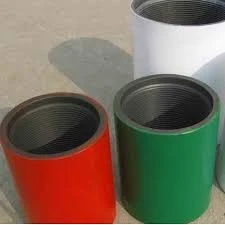- Afrikaans
- Albanian
- Amharic
- Arabic
- Armenian
- Azerbaijani
- Basque
- Belarusian
- Bengali
- Bosnian
- Bulgarian
- Catalan
- Cebuano
- Corsican
- Croatian
- Czech
- Danish
- Dutch
- English
- Esperanto
- Estonian
- Finnish
- French
- Frisian
- Galician
- Georgian
- German
- Greek
- Gujarati
- Haitian Creole
- hausa
- hawaiian
- Hebrew
- Hindi
- Miao
- Hungarian
- Icelandic
- igbo
- Indonesian
- irish
- Italian
- Japanese
- Javanese
- Kannada
- kazakh
- Khmer
- Rwandese
- Korean
- Kurdish
- Kyrgyz
- Lao
- Latin
- Latvian
- Lithuanian
- Luxembourgish
- Macedonian
- Malgashi
- Malay
- Malayalam
- Maltese
- Maori
- Marathi
- Mongolian
- Myanmar
- Nepali
- Norwegian
- Norwegian
- Occitan
- Pashto
- Persian
- Polish
- Portuguese
- Punjabi
- Romanian
- Russian
- Samoan
- Scottish Gaelic
- Serbian
- Sesotho
- Shona
- Sindhi
- Sinhala
- Slovak
- Slovenian
- Somali
- Spanish
- Sundanese
- Swahili
- Swedish
- Tagalog
- Tajik
- Tamil
- Tatar
- Telugu
- Thai
- Turkish
- Turkmen
- Ukrainian
- Urdu
- Uighur
- Uzbek
- Vietnamese
- Welsh
- Bantu
- Yiddish
- Yoruba
- Zulu
crossover drilling tool
The Evolution and Importance of Crossover Drilling Tools in the Oil and Gas Industry
In the ever-evolving landscape of the oil and gas industry, the efficiency of drilling operations is paramount. One pivotal innovation that has significantly enhanced drilling performance is the crossover drilling tool. These specialized tools bridge the gap between different drilling systems, providing a seamless transition that maximizes operational efficiency and reduces costs.
Crossover drilling tools serve as essential connectors that allow the integration of various drilling components. Whether it's transitioning between different sizes or types of drill pipes, these tools are designed to facilitate quick changes in the drilling string configuration. This adaptability is crucial for operators who may need to employ a range of drilling techniques depending on geological conditions.
The design of crossover drilling tools has been refined over the years. Modern tools are engineered from high-strength materials, ensuring durability and resistance to wear in harsh drilling environments. Advanced manufacturing techniques allow for precise engineering, which is essential for maintaining the integrity of the drilling process. This level of engineering not only ensures reliability but also enhances safety by minimizing the risk of equipment failure during operations.
crossover drilling tool

One of the primary advantages of using crossover drilling tools is their ability to reduce downtime. When drilling through different formations or transitioning to different equipment setups, downtime can be costly. Crossover tools enable quicker changes, allowing operators to maintain momentum in drilling operations. This time-saving capability translates into significant cost efficiencies, which is especially critical in an industry where profit margins can be thin.
Moreover, the versatility of crossover drilling tools makes them a vital asset in various applications, including onshore and offshore drilling projects. They can accommodate various drill pipe sizes and types, making them suitable for a range of drilling activities—from exploratory drilling to production drilling. This adaptability helps operators tackle diverse challenges presented by different geological formations, enabling more effective resource extraction.
In addition to operational efficiencies, crossover drilling tools also play a crucial role in optimizing drilling performance. By ensuring a smooth connection between different drilling systems, they help maintain the desired trajectory of the wellbore. This precision is essential in maximizing reservoir contact and improving overall yields—key factors that contribute to the economic viability of oil and gas projects.
In conclusion, crossover drilling tools are indispensable components in the modern drilling landscape. Their ability to efficiently connect various drilling systems not only enhances operational efficiency but also significantly reduces costs and downtime. As the demand for oil and gas continues to grow, the importance of these tools will only increase. Companies looking to maintain a competitive edge must invest in high-quality crossover drilling tools that can support their evolving operational needs and challenges. In an industry marked by constant change, these tools represent a crucial intersection of innovation and practicality.
-
Tubing Pup Joints: Essential Components for Oil and Gas OperationsNewsJul.10,2025
-
Pup Joints: Essential Components for Reliable Drilling OperationsNewsJul.10,2025
-
Pipe Couplings: Connecting Your World EfficientlyNewsJul.10,2025
-
Mastering Oilfield Operations with Quality Tubing and CasingNewsJul.10,2025
-
High-Quality Casing Couplings for Every NeedNewsJul.10,2025
-
Boost Your Drilling Efficiency with Premium Crossover Tools & Seating NipplesNewsJul.10,2025







